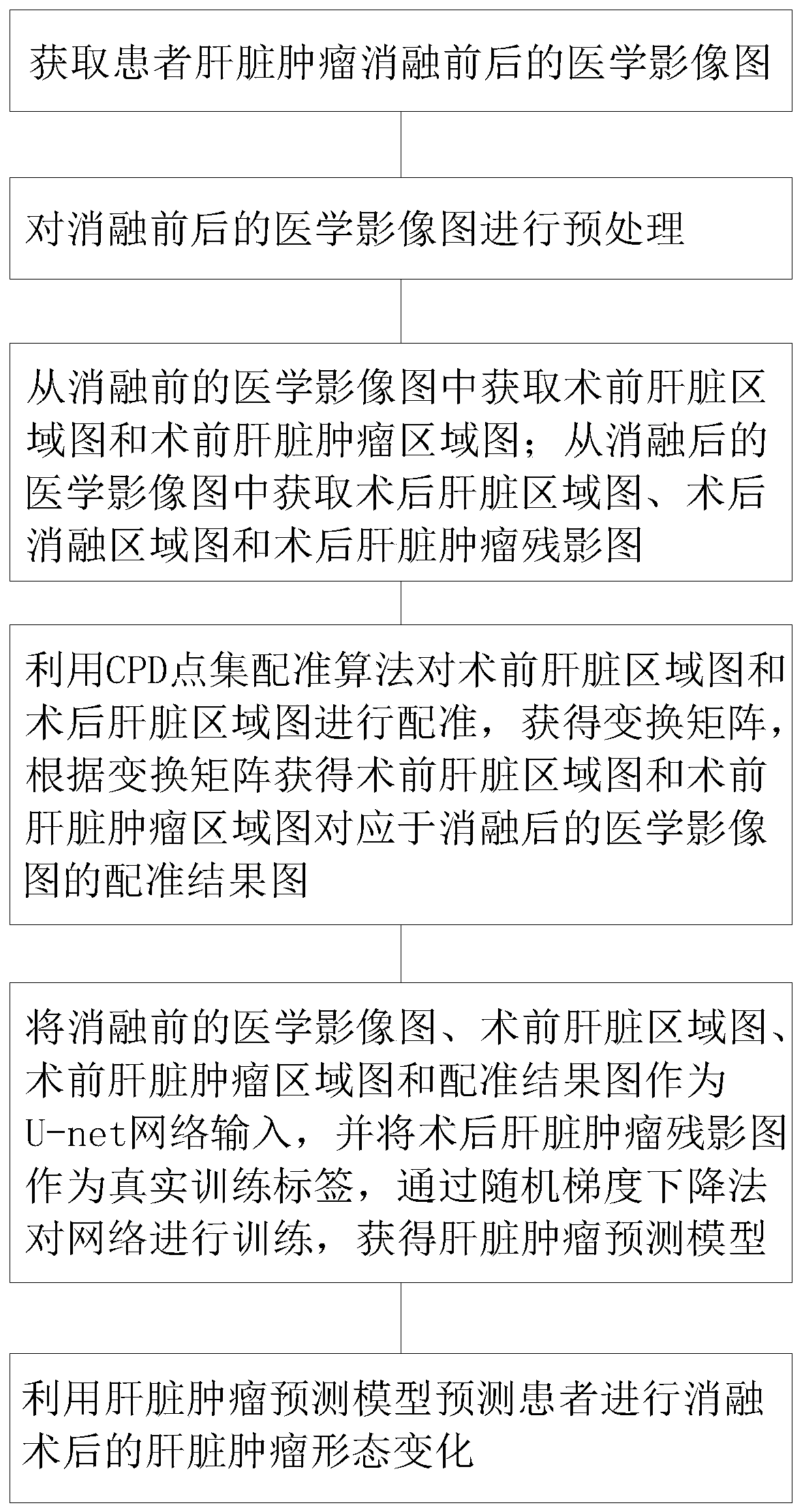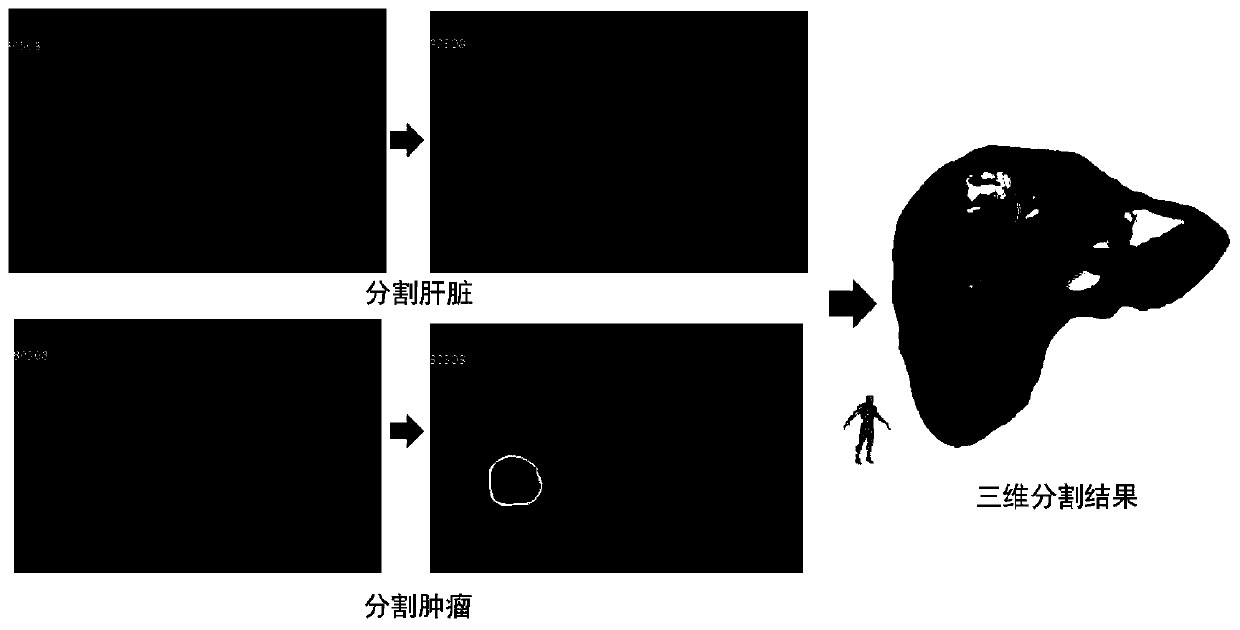Method for predicting morphological changes of liver tumor after ablation based on deep learning
A liver tumor and deep learning technology, applied in the field of minimally invasive ablation, can solve problems such as inaccurate evaluation results
- Summary
- Abstract
- Description
- Claims
- Application Information
AI Technical Summary
Problems solved by technology
Method used
Image
Examples
Embodiment Construction
[0042] Such as figure 1 As shown, this embodiment provides a method for predicting the morphological changes of liver tumors after ablation based on deep learning, including the following steps:
[0043] Step 1: Acquire CT / MRI scanning sequence images of the patient's liver tumor before and after ablation.
[0044] Step 2, preprocessing the medical images before and after ablation, specifically: grouping and dividing the data set according to the factors affecting the liver, then reading the CT / MRI scan sequence images before and after ablation, and performing Gaussian analysis on the CT / MRI scan sequence images Denoising, grayscale histogram equalization, image contrast enhancement, rotation, flipping, and data normalization to increase sample diversity while speeding up network convergence. Wherein, the liver influencing factors include factors such as liver status, tumor type and pathological type.
[0045] Step 3: Obtain the preoperative liver region map and preoperative...
PUM
 Login to View More
Login to View More Abstract
Description
Claims
Application Information
 Login to View More
Login to View More - R&D
- Intellectual Property
- Life Sciences
- Materials
- Tech Scout
- Unparalleled Data Quality
- Higher Quality Content
- 60% Fewer Hallucinations
Browse by: Latest US Patents, China's latest patents, Technical Efficacy Thesaurus, Application Domain, Technology Topic, Popular Technical Reports.
© 2025 PatSnap. All rights reserved.Legal|Privacy policy|Modern Slavery Act Transparency Statement|Sitemap|About US| Contact US: help@patsnap.com



